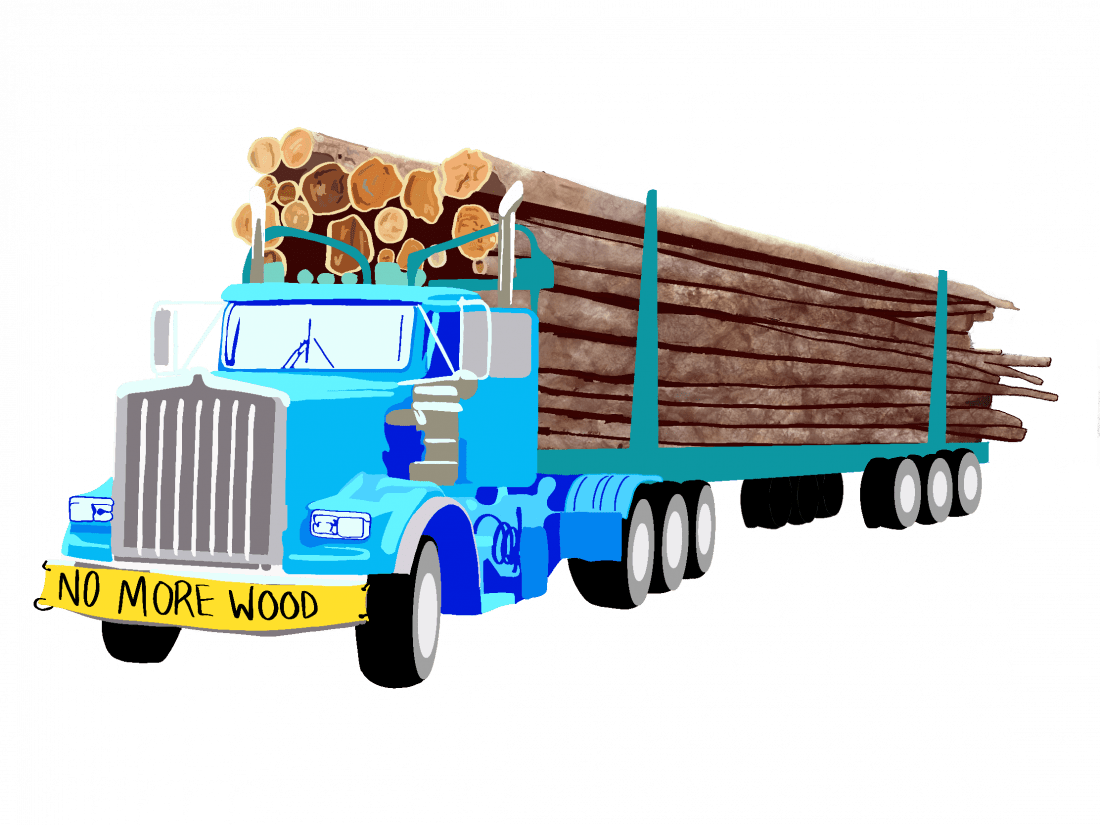
With Justin Trudeau’s re-election promise to plant two billion trees with Trans Mountain pipeline revenues and a tree planting documentary in the works — for Canadians, the reforestation process will increasingly be in the public eye.
Articles like the one from Vice titled “There’s Never Been a Better Time to Get into Tree Planting” emphasize current challenges of recruiting individuals to perform the grueling labour. While tree planters might be in demand, there has also never been a better time to reflect on Canada’s rapidly changing forest industry and how climate change is affecting it.
The 2019 downturn in B.C.’s forest industry has caused nine lumber mills to close, over 4,000 layoffs and dozens of operational reductions. The crisis has been caused by a shrinking inventory of trees available to cut down. This is in part due to recent waves of record-setting wildfires and the spread of the mountain pine beetle epidemic in a warming climate.
Low lumber prices, American tariffs on softwood lumber and fixed stumpage fees — that private companies pay to the provincial government — are all compounding this freefall. Even if fewer trees are being cut and mills continue to close, potentially causing thousands of more layoffs to industry workers, the tree planting industry might still continue to grow in the future.
With plans like Trudeau’s to create 3,500 new seasonal jobs by planting two billion trees over the next decade and climate activists like Greta Thunberg promoting tree planting as an initiative to reduce carbon dioxide in the atmosphere, reforestation could thrive.
Reforestation will need to change as the industry moves from tree planting for logging companies towards addressing deforestation caused by wildfires and the mountain pine beetle.
Forestry layoffs and mill closures can also impact First Nations communities who depend on the B.C. lumber industry for their livelihood. The landmark Forest Amendment Act passed by the B.C. legislative assembly this year will also change Canadian forestry. It will be supporting the increase of Indigenous-held tenure of the total wood supply and require more consultations with First Nations over future forest management decisions.
These changes are significant because Canada’s forestry history is part of its colonial history. Forests have long been considered as the government’s Crown lands and early management systems were established that excluded Indigenous people.
Since the post-war period, various Indigenous groups have asserted their right to control resources by developing management systems to economically participate in the forest industry and to gain greater control over forest landscapes.
Although Saskatchewan forestry is not in a crisis, it represents this changing aspect of the industry. Last January, 13 First Nations, whose ancestral lands cover over two-thirds of the province’s commercial forest zone, formed the First Nation Forestry Alliance. The agreement brings together the members’ collective strength to better protect bands’ assets when dealing with forestry corporations and to improve stewardship over the land.
One of the 13 signatories of the alliance, the Meadow Lake Tribal Council who owns NorSask Forest Products, the “largest First Nations-owned sawmill in Canada” is also leading the province in creating sustainable communities. The recently announced MLTC Bioenergy Centre, a major clean energy project which will use sawmill biomass to create enough carbon-neutral energy to power an estimated 5,000 homes and create stable employment.
While south Saskatchewan residents might not consider forest degradation as an issue, a number of northern activists are concerned about the 20-year plan to clear-cut 3.3 million hectares of the boreal forest north of Prince Albert.
Although corporations argue their “modified clear cut” methods that leave nine per cent of the trees in a cleared area standing emulate natural disturbances like fires, northern residents insist that logging operations severely impact ecosystems and wildlife.
Even though the job of tree planting might prosper in a declining forest industry and move into the spotlight as a way to combat the effects of climate change, attention should still be paid to how the industry is rapidly evolving and moving away from its colonial legacy.
—
Noah Callaghan/ Staff Writer
Graphic: Shawna Langer/ Graphics Editor